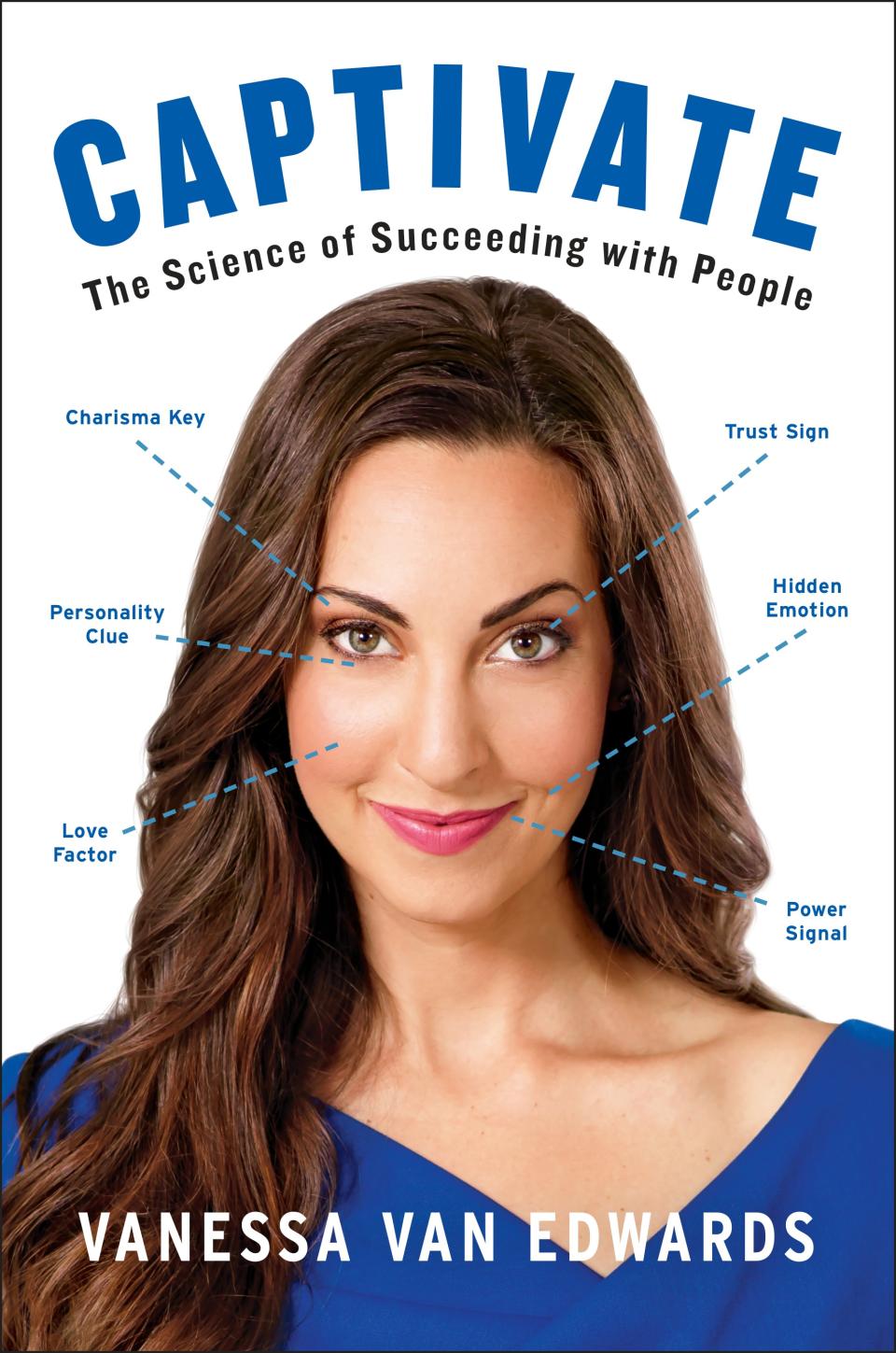6 Ways to Make an Amazing First Impression

What do people think when they first meet you? Studies show we decide if we like someone, if we trust someone, and if we want a relationship with someone within the first few seconds of meeting them. Whether it's a job interview, a date, or making a new friend, how do you make sure you are leaving a killer first impression?
As a human behavior investigator, I have spent the last 10 years studying the Science of People in my human behavior research lab. In my new book, CAPTIVATE, I present a completely different approach to interacting with people. Since one of the most important skills of all is your first impression, here are six steps to supercharging yours - all of which can be done as soon as you meet someone.
Step 1: Use Your Hands
Researchers Robert Gifford, Cheuk Fan Ng, and Margaret Wilkinson found that job candidates who use more hand gestures in their interviews are more likely to get hired. Hands show intention. When someone can see your hands, they feel more at ease and are more likely to befriend you. This is an easy one to implement. When you walk into a room or are waiting to meet someone, keep your hands out of your pockets, and when you get up, lead with your hand to easily indicate that you want a handshake. When you’re talking, use animated hand gestures when explaining your points, the way you probably do at drinks with your friends.
Step 2: Give a Perfect Handshake
The most important thing to know is kind of gross but essential: Make it dry! Nothing is worse than a slimy handshake. If you get nervous and your palms sweat, use my favorite “napkin wrap” trick. When you get to an event, order a drink from the bar and wrap a napkin around the glass. Hold this with your handshaking hand so the napkin catches your sweat before you shake. Also: always keep your hand vertical with your thumb toward the sky when going in for the handshake. Offering your palm up is a nonverbal submissive or weak gesture, and forcing someone into the palm-up position by putting your hand out palm down can be seen as domineering and controlling.
Step 3: Take Up a Lot of Space
Researchers Jessica Tracy and David Matsumoto compared Olympic athletes around the world and found that right after an athlete wins a race they immediately take up as much space as possible, while losing athletes tend to shrink down and take up as little space as possible. When we first meet someone, we want to know if they are a winner or a loser, so we check how much space they take up.
First impressions are a survival mechanism.
You want to show your pride in those first few seconds of meeting someone by keeping your arms loose by your sides as you gesture and placing your hands on tables or chairs nearby to stand broadly. Then roll your shoulders back, and keep your chest and chin angled up and out. If you are sitting, always use the armrests to claim your space. When I walk into someone’s office, I always grab the chair with the arm rests instead of a low couch - those are the worst for pride posing.
Step 4: Pretend This Isn’t Your First Meeting
First impressions are a survival mechanism. When you meet a new person, you have to decide quickly if you want them in your life, and vice versa. It might sound silly, but I always try to greet someone as if they are an old friend. I tell them how happy I am to see them, meet them, and chat with them.
Step 5: Focus on Making Eye Contact
Mutual gazing produces a chemical called oxytocin, which makes us feel like we belong. The more eye contact we make, the more connected we feel to someone. How much is ideal for someone in the U.S.? British social psychologist Dr. Michael Argyle found that when Westerners and Europeans are in conversation, they tend to hold eye contact for an average of 61 percent of the time. He found that 41 percent occurs while talking and 75 percent while listening. Next time you’re talking to someone, try to objectively evaluate where you tend to fall on the spectrum. Try to keep eye contact while they are speaking or when you are making an important point. Another easy way to engage in deep gazing is to notice their eye color. And, I know it’s hard, but don’t look over their head to scope out the scene (or check your cell phone mid-convo).

Step 6: Turn Nerves Into Excitement
It’s OK to be nervous; in fact, you can use nerves to your advantage. All you have to do is reframe them. Nervousness and excitement feel almost identical - beating heart, butterflies, antsy with anticipation. Instead of thinking that nerves are bad, remind yourself that being excited is good and means you care. Whenever you feel nervous butterflies, welcome them and think about how they give you energy.
Vanessa Van Edwards is the lead investigator at the Science of People, a human behavior research lab. A published author and speaker, she runs original research experiments on topics such as the science of attraction, human lie detection, body language hacks, and other people skills. Her latest book, CAPTIVATE: The Science of Succeeding With People, is out April 25.
Follow Vanessa on Twitter.
You Might Also Like

